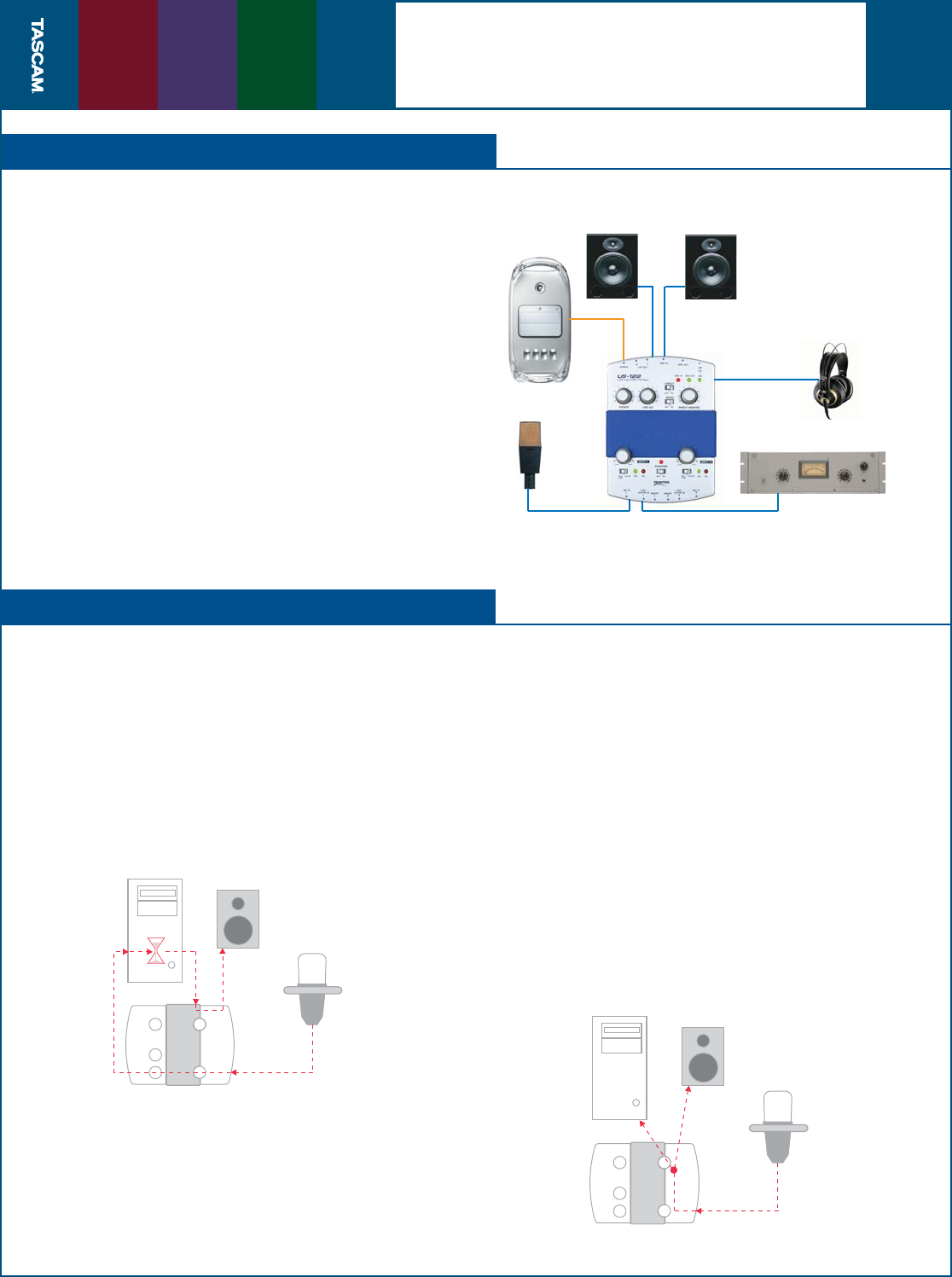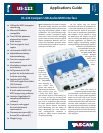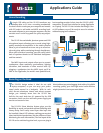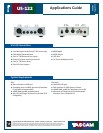
Mic Input L Insert L
Microphone
Monitors
Computer
Line Out
Phones
USB
Headphone
s
Compressor
06/30/03
Page 3 of 4
US-122
Applications Guide
Video Editing and Multimedia Production
S
ure it’s called Motion Picture, but good storytell-
ing often comes from unique sound design. This is
where the US-122 can make the perfect addition to your
video editing or multimedia creation suite. Just plug it
into a free USB port to add high-quality, low noise sound
playback to any editing system. Its tiny footprint fi ts on
even the most cluttered video production workspace.
The pro studio mic preamps are ideal for recording a
strong voiceover, whether it’s just for the rough cut or
for your fi nal product. You’ll also appreciate having a
mic available to add a sound effect, or even to record a
musical soundtrack. The built-in insert jack allows you
to plug in outboard processing like compressors and EQ
so you won’t need to re-record your voiceover in post
production.
What is Direct Monitoring?
W
hen you record a signal into your computer, it goes
through a few steps. First you set the mic or line
input level. Then it’s converted into digital audio, which gets
sent through the USB connection to your computer, where
it needs processing before it reaches the recording soft-
ware. When this signal is played back, it has to go through
the whole journey in reverse. (See Figure 1.) And as fast as
modern computers are, this process isn’t instantaneous.
This means that anything you record would have a
slight delay before it reaches your headphones or speak-
ers. Even though it’s only a few thousandths of a second,
this delay (also called latency) can be distracting when
you’re making music. This delay is even more apparent
when you’re “overdubbing”, punching in changes to a
segment, or recording another layer over what you’ve
already recorded.
It’s because of this delay that we added Direct Monitor-
ing to the US-122. This feature allows you to hear what
your recording before the signal makes it’s journey to the
computer and back. (See Figure 2) Since you’re bypassing
the computer, there’s no delay in your headphones. You
even get a separate level control for the Direct Monitor,
and a Mono switch to sum the two channels together.
Even if you’re still unclear about Direct Monitoring, you’ll
understand the fi rst time you try to record without it.
Figure 1.
Microphone
Speaker
Computer
US-
122
Figure 2.
Microphone
Speaker
Computer
US-
122






